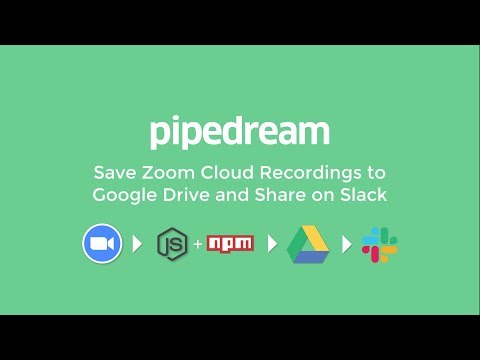What do you want to automate
with WordPress.org and Zoom?
Prompt, edit and deploy AI agents that connect to WordPress.org, Zoom and 3,000+ other apps in seconds.
Trusted by 1,000,000+ developers from startups to Fortune 500 companies
Popular WordPress.org and Zoom Triggers#
Emit new event each time a meeting is created where you're the host
Emit new event each time a meeting starts where you're the host
Emit new event each time a new recording completes for a meeting or webinar where you're the host
Emit new event each time a meeting ends where you're the host
Emit new event each time a meeting is updated where you're the host
Overview of WordPress.org#
The WordPress.org API offers a wide range of capabilities for content management, theme and plugin information, and community engagement. With Pipedream, you can harness this API to create automated workflows that react to events in WordPress, sync content across platforms, or even manage your site's appearance and functionality programmatically. Whether you're looking to streamline your publishing process, enhance user interaction, or keep everything in sync, the WordPress.org API on Pipedream offers a powerful toolset to craft custom solutions.
Connect WordPress.org#
import { axios } from "@pipedream/platform"
export default defineComponent({
props: {
wordpress_org: {
type: "app",
app: "wordpress_org",
}
},
async run({steps, $}) {
return await axios($, {
url: `https://${this.wordpress_org.$auth.url}/wp-json/wp/v2/users`,
auth: {
username: `${this.wordpress_org.$auth.username}`,
password: `${this.wordpress_org.$auth.application_password}`,
},
})
},
})
Overview of Zoom#
The Zoom API lets you tap into a rich set of functionalities to enhance the video conferencing experience within your own app or workflow. With the Zoom API on Pipedream, you can automatically create meetings, manage users, send meeting notifications, and more, orchestrating these actions within a broader automation. This allows for seamless integration with other services, enabling both data collection and action triggers based on Zoom events.
Pipedream workflows allow you to run any Node.js code that connects to the Zoom API. Just create a new workflow, then add prebuilt Zoom actions (create a meeting, send a chat message, etc.) or write your own code. These workflows can be triggered by HTTP requests, timers, email, or on any app-based event (new tweets, a GitHub PR, Zoom events, etc).
Connect Zoom#
import { axios } from "@pipedream/platform"
export default defineComponent({
props: {
zoom: {
type: "app",
app: "zoom",
}
},
async run({steps, $}) {
return await axios($, {
url: `https://api.zoom.us/v2/users/me`,
headers: {
Authorization: `Bearer ${this.zoom.$auth.oauth_access_token}`,
},
})
},
})
Related Videos#
